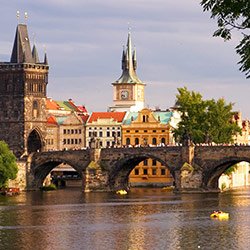Ancient History II-Period 2
Social Sciences & Humanities Program
Amsterdam, Netherlands
Dates: 8/15/25 - 12/20/25

Ancient History II-Period 2
OVERVIEW
CEA CAPA Partner Institution: Vrije Universiteit Amsterdam
Location: Amsterdam, Netherlands
Primary Subject Area: History
Instruction in: English
Course Code: L_GOBAGES103
Transcript Source: Partner Institution
Course Details: Level 100
Recommended Semester Credits: 1.5
Contact Hours: 42
DESCRIPTION
At the end of Ancient History 1, we have observed that by the turn of the Common Era the Mediterranean had been united by Roman conquest. In Ancient History 2, we first return to the origins of Rome as a major city state in central Italy, initially ruled by kings, but a Republic since the late sixth century BCE. We study the internal developments in the Early Republic (fifth to third centuries BCE), especially the so-called Struggle of the Orders (Patricians and Plebeians), resulting in a compromise solution and a curious oligarchic constitutional system. We?ll see how Rome, from the fourth century BCE onwards, first became the ruling power of Italy, subsequently to conquer the Mediterranean in a series of wars against Carthage and the kingdoms founded by the Successors of Alexander the Great. We'll also see that Roman expansion had devastating effects on internal stability: in the first century BCE the Republic crumbled in a series of civil wars, and by the turn of the Common Era a monarchic system had been established. The holders of monarchic power in this system are nowadays usually (at least in English) labelled 'emperors' (from Latin imperator, meaning something like 'commander-in-chief'). The first and second centuries CE were forthe Roman Empire, now encompassing the Mediterranean and a considerable part of north-western Europe, a period of stability guaranteed by military superiority and accompanied by progressive integration of the population of the provinces in the Roman citizenry. This stability was shaken in the third century, when the Empire was confronted with a severe crisis which, however, it survived, although not without considerable adaptations in the administrative, military, and ideological sphere. In Late Antiquity (from the fourth century onwards), the Roman Empire in north-western Europe and the western Mediterranean was superseded by Germanic kingdoms. In the Eastern Mediterranean, however, it survived as what we call the Byzantine Empire. In addition to the events and developments here sketched, we'll also go into morestructural aspects of Roman history: social relations, economic developments, class conflict, political institutions, law, warfare, and last but not least changes in the religious sphere. The dominant position of Christianity in European history is, after all, a legacy of the Roman Empire.
Contact hours listed under a course description may vary due to the combination of lecture-based and independent work required for each course therefore, CEA's recommended credits are based on the ECTS credits assigned by VU Amsterdam. 1 ECTS equals 28 contact hours assigned by VU Amsterdam.
Contact hours listed under a course description may vary due to the combination of lecture-based and independent work required for each course therefore, CEA's recommended credits are based on the ECTS credits assigned by VU Amsterdam. 1 ECTS equals 28 contact hours assigned by VU Amsterdam.







